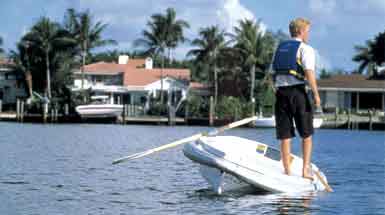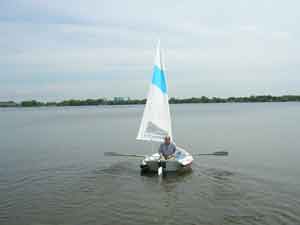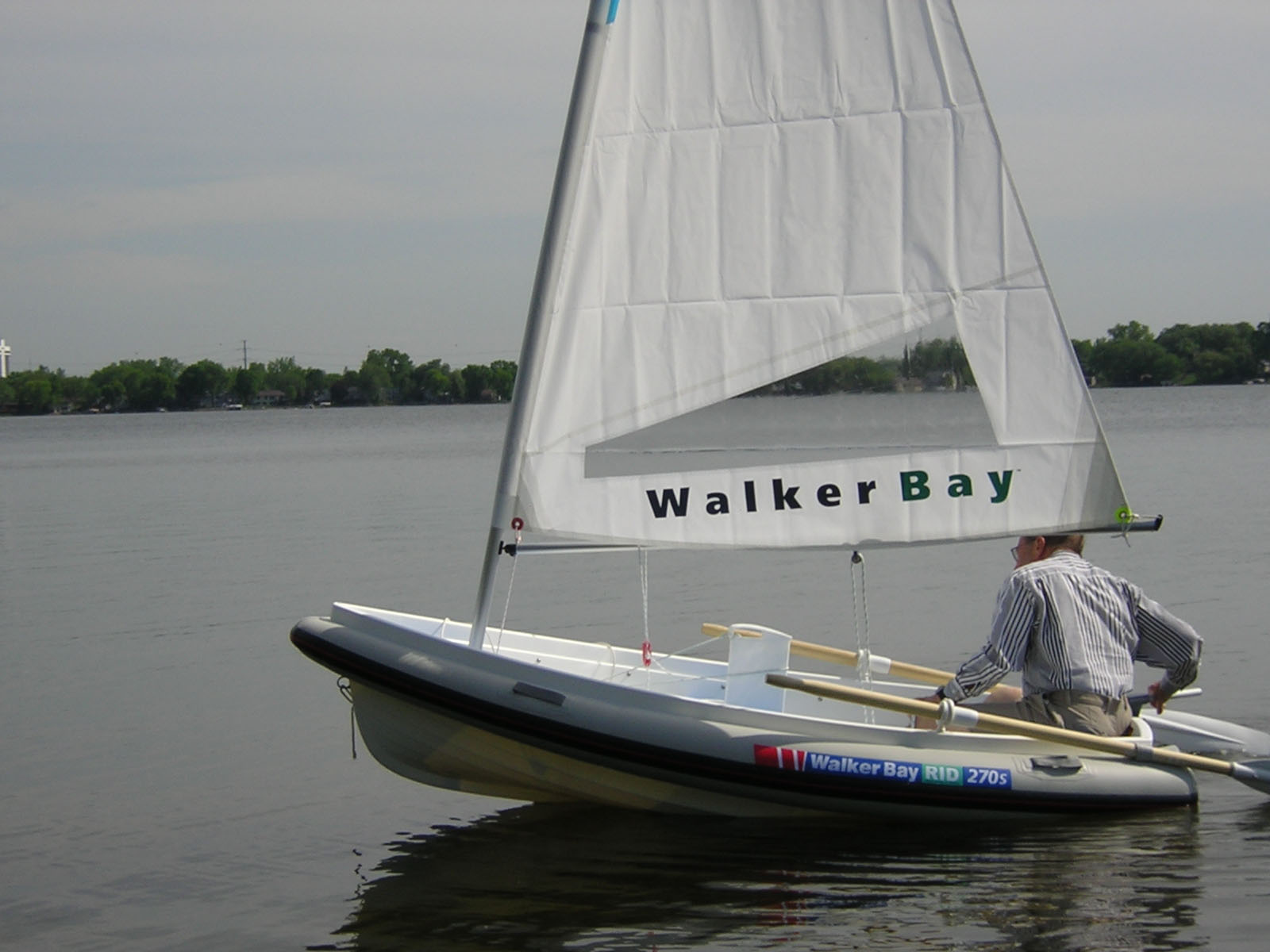Walker bay has captured a huge share of the dinghy market since its start only five years ago. The dinghies are made of injection molded plastic and have proven to be almost indestructible. They have always rowed well and carried well for their size. Walker Bay has now added inflation tubes along the gunwales to increase capacity and appeal to a wider range of enthusiasts who are migrating to rigid inflatable dinghies and larger rigid inflatables as well. The tubes give the boats broader appeal with their added capacity for larger outboards, more gear and people and even sail kits.Walker Bay has made this transition from the molded plastic, indestructible dinghies to the rigid inflatable models the right way. You can retrofit your Walker Bay 8 or 10 to the Rigid Inflatable 270 or 310. This gives the dinghies a formidable amount of stability, not one standing on the side as pictured, not two, but three guys standing on the side without taking on water. That’s impressive in an eight foot boat of any kind. The most impressive feature from a company who could easily have obsoleted their older boats was the RID kit. All that’s required to install the kit is to drill a line of small holes along the gunwale of your current boat, install the tube track, slide on the tube, and - voila - you have a RID.
With the extra tube flotation, the Walker Bay looks like something close to an ideal, small yacht dinghy - easily rowable, capable of handling a small outboard, and fairly light at eighty one lbs.. for the 8’ RID model. The tube kit comes in two types - a “yacht tender” type with four separate air chambers, and the “sailing” type: the manufacturer has saved some weight and cost by using a single air chamber for the sailing model. This reviewer would be more comfortable with a 2- or 3-chamber compromise. A nice feature in the kit is a set of lifting eyes for carrying the dinghy on davits. Walker Bay continues to try improvements in the sail kits for its dinghies. Latest are a lock-on rudder and telescoping, flex-extension tiller. The latter is quite useful for the various positions required to balance the dinghy for sailing. Adult sailors will find the usual frustrations with a small, light dinghy sailing: centerboard boat. The centerboard doesn’t want to stay part way up, it either wants to be up or down. Weight positioning is critical to performance. The size of the boat makes you wish you were younger, more agile and comfort was not defined by the aches you don’t have. Overall, the rig sails okay even well. It will be just fine for your sixty five pound grandkids.
Now if you are going to use the Walker Bay 8 or 270 as a dinghy for a smaller yacht, it is very hard to beat. It will carry a 2 to 4hp outboard, an electric trolling motor, passengers, and gear in a very fine manner. Best of all, it rows well and is extremely stable. Remember that rowing, it can add years to your life and relieve all kinds of stress! With their almost indestructible plastic construction, these dinghies look good and will stay that way for years with minimal care. I rarely use anything more than a high pressure hose to clean my dinghy. Low maintenance is a huge plus with this dinghy. Thom Burns publishes Northern Breezes and Sailing Breezes. Don Maxwell owns Parvati, a Westerly 25, in Bayfield, Wisconsin. |



